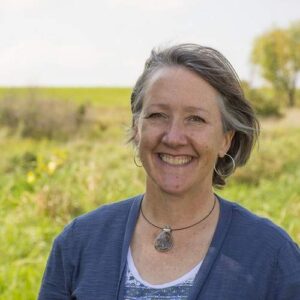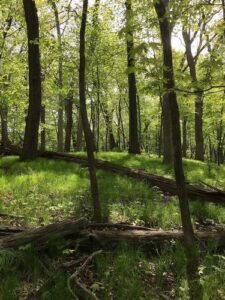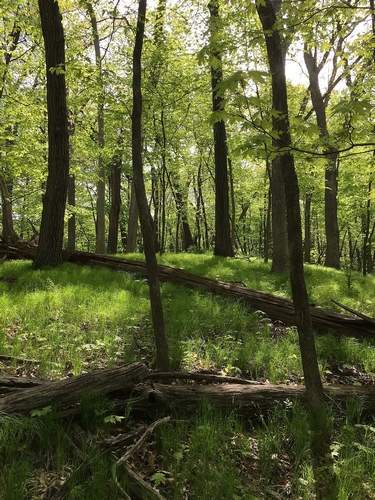
Carole Teator, Eastern Iowa Program Director at Iowa Natural Heritage Foundation.
The Gazette is working with the Linn Landowner Forum to present a weekly series of columns about elements landowners should consider when replacing trees and plants lost in the Aug. 10 derecho. The series will focus on recovery, the importance of native plants and other topics. Written by Carole Teator, this is the eighth in a series.
When the Iowa Natural Resource Commission met in mid-November, officials reported that nearly a quarter of the woodlands in Iowa were heavily damaged by the August derecho.
It’s easy to imagine the extent of this loss if you live in or around Cedar Rapids. Communities here have lost more than half of their mature trees and are figuring out how to replace tens of thousands of trees.
But the numbers on a statewide scale still are shocking. Pete Hildreth, the Conservation and Recreation Division administrator at the Iowa Department of Natural Resources, reported that 724,000 acres of woodlands across the state were lost to the storm.
Many of those downed and damaged trees are in beloved parks and public areas that will never look the same.
Faulkes Heritage Woods, which is owned and managed by the city of Marion and protected by a conservation easement held by Iowa Natural Heritage Foundation, is unrecognizable from its previous state.
But it will be cared for and stewarded back to health because of the foresight of previous landowners that put protections in place through the easement.
It is a good reminder that the decisions we make now will impact generations in the future.
Many woodland owners, both public and private, are facing tough choices trying to decide what management principles they want to use in the coming weeks, months and years.

Sedges growing on a forest floor, like these in Faulkes Heritage Woods on the border of Cedar Rapids and Marion, and a diverse mixture of tree species and ages of trees are all indicators of a healthy woodland. Sustainable forestry practices and long-term protection of woodlands can ensure that future generations enjoy access to such landscapes. (Photo by Carole Teator)
Some may want to leave the woods to recover on their own, and some may want to remove a considerable number of trees that are downed or damaged beyond hope. There are advantages and disadvantages to both methods.
By taking a more hands-off approach, there are benefits for wildlife due to the habitat provided by snags and brush piles. There is the opportunity to see how nature responds to disruption and there is less work involved.
However, this can leave woodlands largely inaccessible to hikers and other users for years to come, and large hanging branches and structurally compromised trees are hazardous to those who do venture in.
Also, in areas where there is a lot of deer pressure, the trees that support wildlife — such as oaks and hickories — will have a difficult time establishing a foothold without the help of humans to plant and protect them. That may leave weed trees and invasive species to dominate.
By taking a more assertive approach to restoration, hazardous trees are removed and the constant reminder of what we lost due to the tangle of toppled trees is alleviated.
The restoration of the woodland is jump-started by the planting of diverse tree species, and if it is done well, we have the opportunity to help wildlife by retaining some logs and brush piles.
Hiking and other activities are possible sooner on trails created where they will have the least impact to the soil. Significantly, the replanted trees are a visual promise that life is returning to normal and are a gift to future generations.
But such restoration will not come without its own trauma when we see the area cleared in order to replant.
If not done according to the best sustainable logging and forestry management practices, fragile forest soils can be compacted and damaged, leading to erosion and loss of suitable conditions for replanting.
Also, the cleared land may tempt some people to build on or otherwise develop the land if it is not protected.
Obviously, the decisions landowners face as we work to recover from this storm are difficult.
But if they are done by listening to nature and thinking about the next generation — or the next 10 generations — they will lead to a more healthy recovery.
Carole Teator is the Eastern Iowa program director at Iowa Natural Heritage Foundation. She lived in Ames, Dubuque, Marion and Garber before ultimately finding her way to the wooded neighborhood she calls home in Cedar Rapids.

